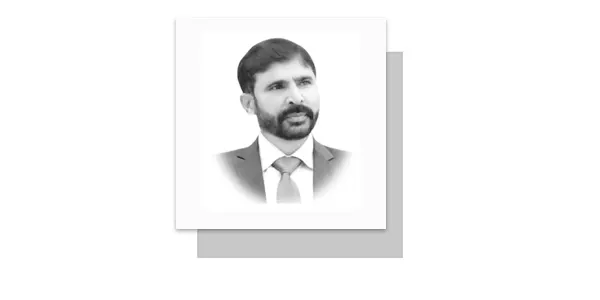AS Pakistan navigates its economic landscape in the 2020s, the trajectory towards 2030 presents both challenges and opportunities.
The GDP growth rate, which exhibited fluctuations throughout the last decade, has set the stage for an ambitious economic revival strategy that leverages past learnings while focusing on sustainable development.
Historically, the previous decade can be characterized by a mixed performance driven by structural reforms and global economic conditions.
From 2010 to 2020, Pakistan witnessed an annual GDP growth rate averaging around 4.5%, peaking at 6.1% in 2017.
However, the socio-economic repercussions of the COVID-19 pandemic in 2020 necessitated a reassessment of economic priorities.
In the light of the challenges faced, the government has recognised that the journey towards a sustainable and resilient economy hinges on enhancing productivity through human capital development, technological advancement and a more robust industrial base.
To this end, initiatives aligned with the Sustainable Development Goals (SDGs) will be fundamental in shaping a holistic economic framework.
One significant area of focus for Pakistan’s economic planners is the agrarian sector, which constitutes a large portion of the workforce.
As posited by leading Pakistani economists, such as Dr. Hafiz Pasha, the integration of modern agricultural techniques coupled with water management strategies is vital for improving yield and ensuring food security.
Policies that incentivise innovation in agriculture can stimulate rural employment and contribute significantly to GDP.
Simultaneously, Pakistan must navigate the challenges posed by climate change.
Dr. Ishrat Hussain, in his analyses, emphasises the importance of developing an adaptation strategy that incorporates green technologies and sustainable practices in various industries, particularly in textiles and manufacturing, which are integral to exports.
Furthermore, fostering an entrepreneurial ecosystem will be crucial in catalysing economic growth.
Policies that enhance access to finance, both for start-ups and small and medium enterprises (SMEs), will empower a new generation of business leaders and innovators.
The establishment of technology parks, incubators and a conducive regulatory framework could pave the way for home-grown solutions to local problems, thus enhancing competitiveness on a global scale.
In terms of human capital, investment in education and skills development remains paramount.
Acknowledging the analysis by notable economists like Dr.
Abid Suleri, Pakistan’s demographic dividends can only be fully realized through a reformed education system that prioritizes STEM subjects and vocational training.
This will ensure that the workforce is adequately prepared to meet the demands of a rapidly evolving market landscape.
Looking into the financial sector, increasing fiscal space through tax reforms and improved collection mechanisms can enhance government capacity to invest in infrastructure projects that are critical for economic productivity.
Infrastructural development in transportation, energy, and information technology will serve as a backbone for economic expansion, with significant multiplier effects on job creation and trade facilitation.
In conclusion, Pakistan’s journey toward 2030 must be guided by the lessons of the past and shaped by a forward-looking, inclusive strategy.
A resilient economic future demands a holistic approach—one that prioritizes sustainability, fosters innovation, and invests in human capital.
By strengthening education, embracing technology, and empowering entrepreneurship, Pakistan can carve out a dynamic and competitive role within South Asia.
Achieving this vision will require sustained collaboration among policymakers, the private sector, and civil society, ensuring that the path to 2030 leads not only to economic prosperity but also to equity and long-term stability.
—The writer, a PhD scholar, is associated with Islamia University Bahawalpur. (akramzaheer86@yahoo.com)


















